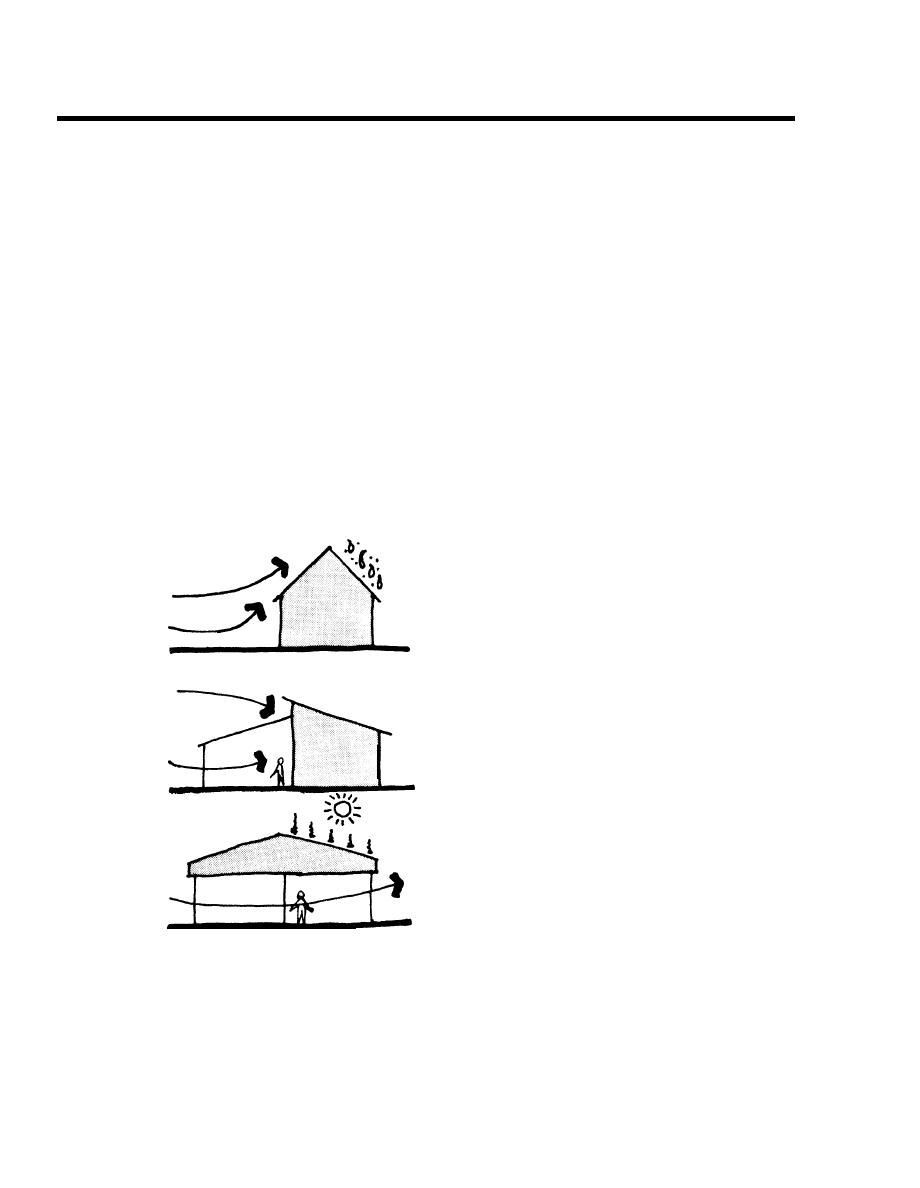
Page 10
DG 1110-3-124
August 1976
2-4 Climatic
a.
Building designs for Arts and Crafts Centers should be
responsive to regional variations in climate. This affects
not only building orientation and fenestration but also use
Influences
of outside space for activities which may be performed in
either open or covered work areas. In reference to author-
ized space allowances, covered areas are calculated at one-
half of the gross square foot area of indoor areas. In mild
climate zones, advantage can be made of this factor to
increase the usable amount of work area within the
authorized programmed space allowance.
b. With the growing concern for energy resources it is
important to begin considering conservation factors at
the early planning stages. For example, in more severe
climates, buildings should be compact to minimize perim-
eter walls. They should be oriented to reduce exposure
on prevailing weather sides and to reduce heat loss. In
temperate locations, full advantage should be made of
overhangs, setbacks and orientation to shade windows
and utilize prevailing breezes, thus reducing the need for
mechanical cooling. Covered exterior work areas may be
provided in addition to indoor space.
(1) Severe climate dictates compact building forms.
(2) Temperate climate permits the use of natural ventila-
tion and light.
(3) Warm climate permits maximum use of covered ex-
terior work areas in addition to indoor space.
Building Orientation Factors



 Previous Page
Previous Page
